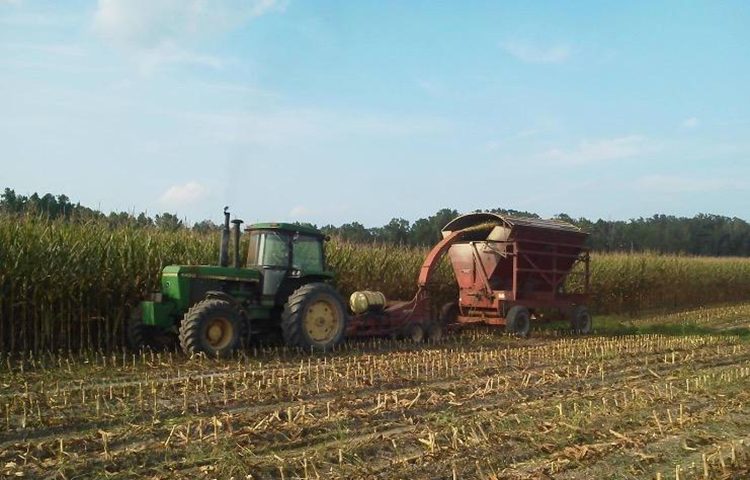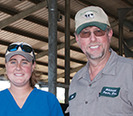
Well, it’s corn silage time. This means long days, early mornings, and late nights.
Throughout the year, we harvest silage three different times: ryegrass, corn, and sorghum. The ryegrass and sorghum are usually both done in a week or less. Corn silage, on the other hand, has taken us at least a full two weeks in the past.
This year we planted substantially less corn, so we are hoping to be done within a week. Downsizing the herd when going to robots has allowed us to do this.
When chopping corn silage, we tend to run two to three choppers that dump the silage into dump trucks. The dump trucks bring the feed to our silage pits, which are about 12 feet deep. When the silage reaches the pit, it is pushed up with a 6-wheel tractor with a blade connected to the front to smooth the silage out in a thin layer. It is packed down with the weight of the tractor at the same time.
Once the silage is all cut and packed into the pit, we spray a product called Silo Guard, a feed additive, on top, then we take a vapor barrier and lay it across the entire pit. This is followed with a heavy duty roll of plastic. We surround the pit with dirt to hold down the edges of the plastic. Then we put a bird barrier on top of the plastic. At this point, the pit is ready to be covered with tire sidewalls.
It is quite a process to keep the feed quality at a maximum for our girls! We take pride in doing it well. Everyone on the farm comes together and gets the job done – and they do a great job with it.

Mark and Caitlin Rodgers are dairy farmers in Dearing, Georgia. The Rodgers have a 400-cow dairy that averages 32,000 pounds of milk. Follow their family farm on Facebook at Hillcrest Farms Inc.